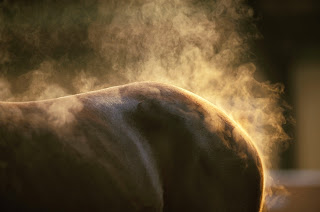
As we prepare for roast turkey, brussels sprouts and Christmas pudding, have you considered how or what you will be feeding your horse this Christmas? Here a few things to add to your list of festive preparations!
Water
Water is the most important yet often most overlooked nutrient in the horse’s diet, so if we have a cold snap over the next couple of days make sure you start by breaking the ice in water troughs daily. Some horses are reluctant to drink very cold water, which in older horses may be due to sensitive teeth. Try adding warm water to help tempt reluctant drinkers as reduced intake may lead to colic, particularly in horses that are stabled for long periods with additional hay (because it is much dryer than grass).
Frost or Snow
Are you worried about whether or not you can turn out your horse if we have white Christmas? Turning out for short periods can help your horse to ‘let of steam’ in prolonged periods of snow but if your horse lives out full time, remember to feed plenty of additional forage to ensure that he doesn’t lose condition. Although it may mean additional mucking out, also remember that horses prone to colic or laminitis should not be turned out frosty grass.
Tying-up
If you decide to give your horse a few days off over Christmas, make sure you reduce any high starch, cereal based feeds to help prevent tying-up. Reduce your feed by half from the evening before to the evening after his day(s) off, feeding additional forage if necessary.
Festive Treats
Horses often become much-loved family members and as such we like to treat them on Christmas day too. Some owners chose to treat their horse or pony with an additional or larger feed and sometimes even ale or Guinness. It’s important to remember that sudden changes to the diet may lead to digestive upsets such colic, so make sure you reach for horse and pony treats, an extra carrot or a few mints instead.
Christmas is a time best spent with friends and family and for many of us, this includes our horses too. As you make your final preparations, remember that reduced work and colder weather may mean that you need to make a few seasonal changes to your horse’s regime too!
Merry Christmas!








